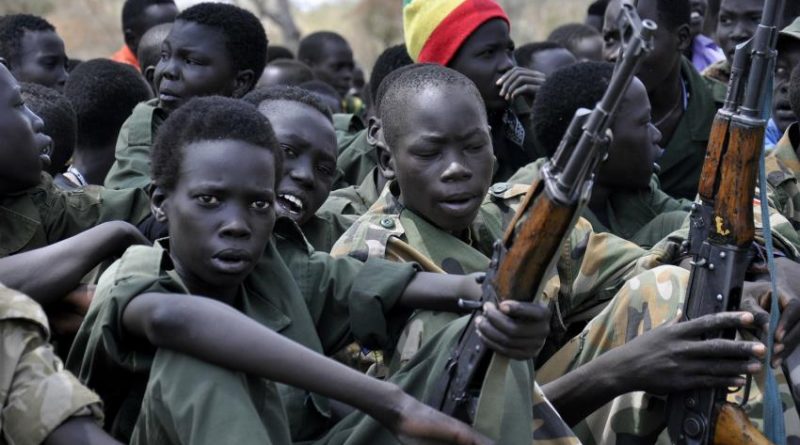Focus on Child Soldiers: South Sudan
By Alyssa Tolentino
Staff Writer
Years of conflict in and around South Sudan bred a generation made to fight. According to UNICEF, rebels and government forces have conscripted more than 17,000 children to fight. Significant progress was made in the end to the recruitment of child soldiers in 2015, but renewed fighting sparked fears of a new surge in not only recruitment, but re-enlistment as well.
After more than two decades of civil war in Sudan between the largely Muslim north and Christian south, South Sudan gained its independence in 2011. In late 2013, fighting between supporters of President Salva Kiir, a Dinka, and those of former Vice President Riek Machar, a Nuer, ignited another civil war fought largely along ethnic lines and fought largely by child soldiers, reports UNICEF.
The war killed tens of thousands of civilians and displaced more than 3 million people. Among those included are the parents of one Babacho Mama. Orphaned and uneducated, the eleven or twelve year old boy did not have a choice but to enlist in a Pibor militia, called the Cobra Faction. All he had to do was ask for a gun.
According to UNICEF Deputy Executive Director Justin Forsyth, “Forces attacking villages often grab children and force them, at gunpoint, to fight while others join to save themselves from being beaten or killed and to protect their communities.” Families are threatened with the theft of their cattle, a major source of wealth in South Sudanese society.
In 2014, the United Nations launched a global campaign combatting the recruitment of child soldiers, hoping to remove children from battlefields within two years. In 2015, The Washington Post reports, Mama and 1,774 other boys promised the UN that their lives as combatants had ended. The boys handed over their weapons, schools were opened, vocational programs were launched, and social workers arrived. The challenge in South Sudan, however, is not just disarming children but keeping them disarmed while the war continued to ravage their country.
Vedasto Nsanzugwanko, the country head of child protection for UNICEF who has also worked in Rwanda, Uganda, and Sri Lanka, said, “There is no harder place than South Sudan to demobilize children.” Aid projects were almost always disrupted by violence. The war has destroyed farmland and blocked commerce, debilitating the economy. The result: inflation and famine. What’s more, the UN has stopped distributing food aid.
Anyang Nyielo, 23, said, “They demobilized us, but they gave us no compensation.” There were few alternatives left. Boys were so hungry they’d collapse in their classrooms. But at least the barracks supplied meals and guns to protect themselves.
“Maybe I need to go back,” Mama said. “It is better to die in combat than in hunger.”
The Washington Post reports shrinking school enrollment as children disappear suddenly to fight on the battlefields. This comes at a time when the United States appears to be turning inwards. The Trump administration’s new foreign policy would cut UN program budgets by almost half. According to Newsweek, this would affect funding to UNICEF and peacekeeping. With aid being pulled out of South Sudan, choices are scarce for this generation of child soldiers. Boys like Mama are running out of time.



